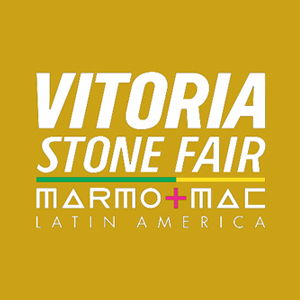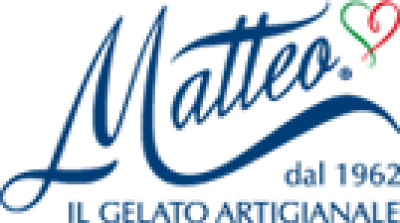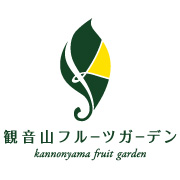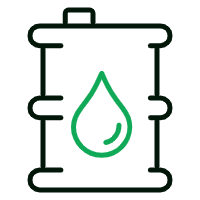Sustainably producing meat and eggs for consumers is critical to meet the increasing demand for protein food sources to feed a growing global population. Poultry, meat, and eggs are essential to the food supply worldwide. As the largest centralized input into poultry production, feed significantly influences food safety, security, and sustainability.
“Feed is fundamental to each stage of poultry production, from breeding operations to grow-out and layer operations. Similarly, each of these stages has specific goals related to food safety pathogens, such as Salmonella, and productivity goals largely impacted by gut health. The role of feed as a fomite has been extensively evaluated. A strong body of literature evidence feed as a fomite for avian pathogens in poultry production, most notably Salmonella,” said Dr. Enrique Montiel, Anitox DVM and Director of Nutrition and Live Production.
Does feed hygiene influence producer food safety initiatives?
Over 500 publications link Salmonella to animal feeds. Wang et al. 2023 reviewed nearly 40 publications over the course of more than 50 years focusing on Salmonella detection and prevalence in broilers, summarizing data from over 40,000 samples.
“Literary analysis of these studies allowed researchers to isolate the relative contribution of various factors influencing Salmonella prevalence in broiler operations. According to the literary review by Dr. Wang, feed was observed to have a 4.8% contribution to Salmonella positivity in broilers.”
Pathogen transmission via feed is concerning because of its ability to interact directly with the gastrointestinal tract and exert influence on the microbiome.
Dr. Montiel continues, “For example, the findings from Wang et al. directly state that the feed itself accounts for 4.8% of the Salmonella prevalence in poultry production systems. This excludes the fact that feed contributes to the pathogen prevalence in the gut and consequently to the horizontal transmission observed in grow out, laying, and breeding facilities.”
Poultry producers generally accept that prevention is the best protection against pathogens within poultry production systems and deploy many strategies and tactics to reduce inbound microbial loads.
“Today’s producers have strict, comprehensive biosecurity programs intent on mitigating pathogen transmission in poultry production, including vaccination programs, wash-in and wash out procedures, and feed pathogen control measures,” says Dr. Montiel.
Implement effective feed pathogen control
Organic acid and heat treatment are commonly used strategies for controlling feed source pathogens. Heat treatment, when performed at 86°C for 6 minutes as recommended by Aviagen, serves as an effective kill step for Salmonella, but offers no protection against recontamination. Recontamination post-heat and during transit to the farm is a significant challenge.
“Post-heat, particularly in coolers, conditions can become favorable to microbial survival, meaning any persisting microbes within feed can rebound, contaminating feed production lines and subsequent loads of feed. In mills where pelleting is the only pathogen mitigation strategy, this is especially true as the temperatures typically fall between 80-85°C and are not sustained for a time long enough to achieve effective contamination control,” adds Dr. Montiel.
Increased awareness and loss of control tools such as antibiotics have led many producers to pay more attention to feed contamination. Organic acids are a common tool used and efficacy depends on the acid or acid blend used. Formic, propionic, and acetic acid have all demonstrated efficacy at high inclusion rates, usually 4-8 kg/MT. When combined with heat treatment, higher microbial load reductions may be observed.
“Making a real, significant impact on feed microbial loads and pathogen prevalence requires an understanding of feed and feed ingredient microbial risk,” explains Dr. Montiel,” “When the risk is high, or the tolerance for risk is low, feed sanitation may be the best fit. Feed sanitation reduces feed microbial loads, controls pathogens such as Salmonella, and provides continued protection against recontamination. Decreasing microbial loads in feed also contributes to intestinal balance and the development of a healthy microbiome.” (Figure 1)
Figure 1. Finio®, Anitox Feed Sanitizer depicted as product A, demonstrates high-level Salmonella control at much lower inclusion rates than for a variety of commercially available organic acid mixtures. (Source: Gosling et. al., 2021)
Reducing inbound feed microbial loads helps producers take effective action against pathogen prevalence within live production and meet their food safety goals. However, continued research into the impact of feed sanitation on poultry production demonstrates that reducing feed microbial loads can also support feed efficiency and producer bird performance and productivity goals.
Feed sanitation impact on bird performance
Variable microbial loads and pathogen prevalence in feed can challenge balance within the microbiome and lead to dysbiosis, impacting gut health and, thus, poultry health and performance.
“We worked with Dr. Jeanna Wilson at the University of Georgia and Dr. Dan Moore at Colorado Quality Research to evaluate the impact of feed sanitation on broiler breeders and broilers. In both trials, feed sanitation significantly reduced feed microbial loads compared to the control diets. Both trials evidence that controlling microbial loads in feed positively impacts poultry health and performance,” mentions Dr. Montiel.
Figure 2. Feed Sanitizer, Termin-8®, Reduces Feed Microbial Loads (Source: Avila et al., 2023)
Avila et al. 2023 demonstrates that broiler breeders fed sanitized feed exhibited lower mortality during production, reduced eggshell contamination, and increased production of “Grade A” chicks.
“A feed sanitizer was found to effectively reduce total aerobic bacteria, Enterobacteriaceae, Clostridia as well as yeast and molds in feed (Figure 2). Additional results demonstrated that broiler breeder hens consuming a sanitized diet had a 4.5% lower mortality compared to hens fed a control diet.”
The study also revealed that fertile eggs from hens consuming sanitized feed had reduced shell microbial loads (Figure 3) and late-lay eggs from the same hens had a 4% increase in “Grade A” chicks (Figure 4). Post-hatch, offspring of the hens fed sanitized feed demonstrated lower 7-day mortality, especially in offspring of week 60 lay, in which 7-day chick mortality was reduced by 3%.
Figure 3. Eggs from Hens Fed Sanitized Feed Exhibited Lower Eggshell Surface Microbial Loads (Source: Avila et al., 2023)
Figure 4. Chicks from hens fed sanitized feed were more likely to receive “Grade A” ratings.
“Trial results from our work with Dr. Dan Moore have been submitted for publication and indicate that broilers fed sanitized feed prior to and during a Necrotic Enteritis challenge model exhibit less severe lesions and , reduced mortality, as well as improved weight gain and feed conversion,” adds Dr. Montiel.
Effective feed hygiene programs successfully reduce feed microbial loads and the risk of pathogen entry into live production. Feed sanitation has been shown to not only control feed source pathogens and reduce microbial loads but has also demonstrated a beneficial impact on bird health and performance. Managing risk and supporting performance through feed sanitation gives producers the power to meet operational safety and productivity goals.
 Pages you might like
Pages you might like








 Latest information
Latest information
 Follow official account
Follow official account
 Online support
Online support
 鄂ICP备2022017323号
鄂ICP备2022017323号
 鄂公网安备 42018502006493
鄂公网安备 42018502006493
 Launch Exhibition
Launch Exhibition
 Release information
Release information







 Today's topic
Today's topic

















